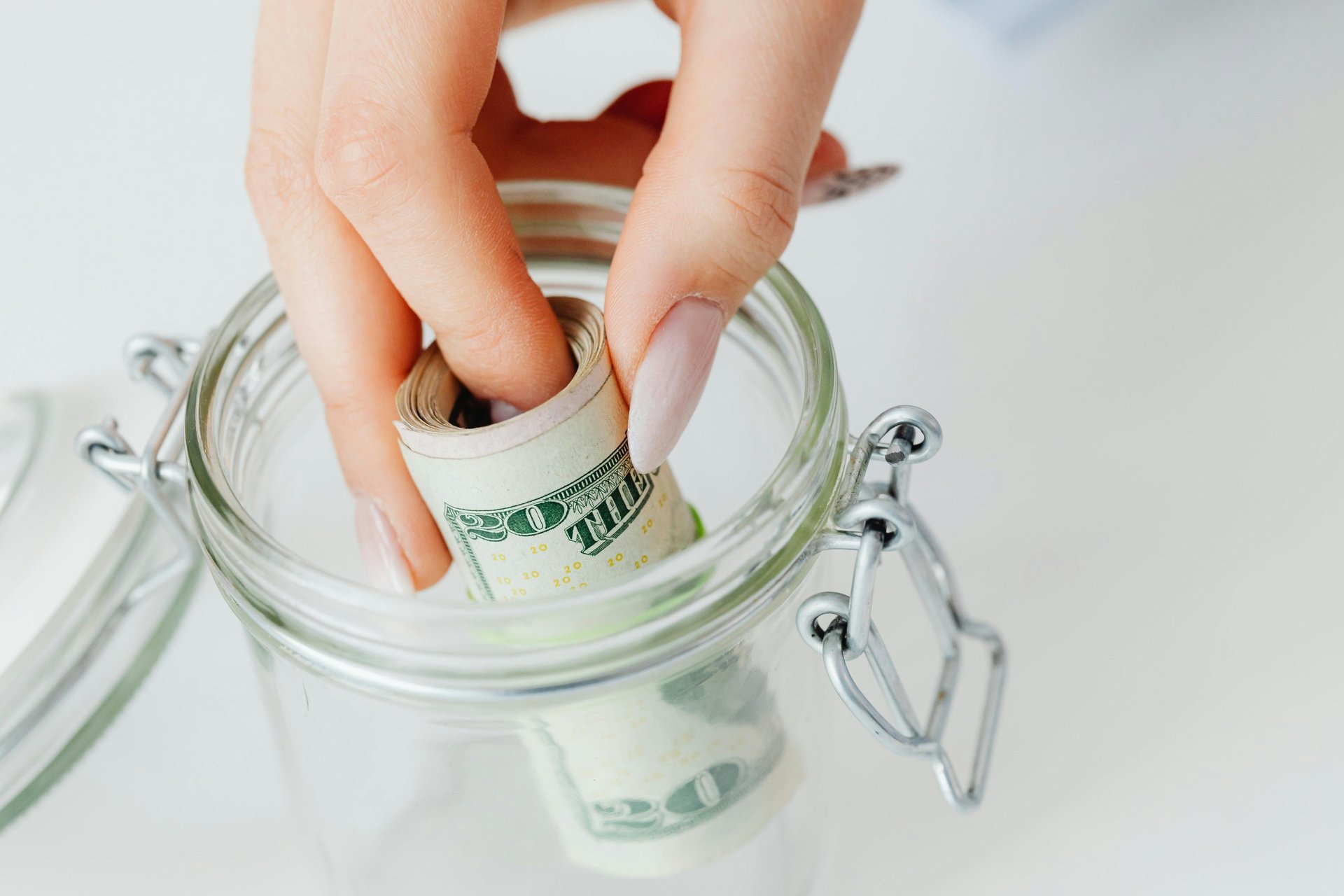How Can You Build an Emergency Fund?
Learn practical tips to build an emergency fund step by step. Read on and secure your financial future by saving smartly and preparing for unexpected expenses today!
MONEY
1/18/20253 min read

How to Build an Emergency Fund
In the world of personal finance, there's one thing everyone should have but often doesn't—an “emergency fund”. This fund acts like a financial cushion for unexpected situations in life.
In this blog post, we'll discuss what an emergency fund is, why having one is essential, and how you can build your own, step by step.
What Is an Emergency Fund?
An emergency fund is a savings reserve set aside to help you navigate unforeseen monetary challenges. There are different types of emergency funds, each with a specific purpose.
The most common one is a basic emergency fund established usually with the intent of ensuring one's basic living costs are covered over three to six months duration - acting as vital support during job loss scenarios or unwelcomed medical bills ambushes. Then, there's the specialized emergency fund, like one dedicated wholly and solely to healthcare costs arising unexpectedly.
Next, there's the mini-emergency fund, which is a smaller cushion, and the fully-funded emergency fund, which is a big one meant to cover prolonged financial challenges.
These various types of emergency funds cater to different financial needs and provide you with a monetary backup against unexpected curveballs life might throw at you every now and then.
Rainy Day Fund vs Emergency Fund
A rainy day fund and an emergency fund both provide financial security, but they serve different purposes. A rainy day fund is meant for small, unexpected expenses that arise from time to time, such as a car repair, a minor home fix, or an unexpected bill. These are manageable costs that don’t disrupt your overall financial stability, so the fund is typically smaller and easily accessible in a regular savings account.
In contrast, an emergency fund is designed for more significant, long-term financial disruptions like job loss, major medical emergencies, or extensive home repairs. This fund acts as a financial fallback and is generally larger, often recommended to cover three to six months of essential living expenses.
While a rainy day fund addresses short-term inconveniences, an emergency fund ensures stability during prolonged crises. Building a rainy day fund is usually the first step, as it’s quicker to save and provides immediate relief for minor financial surprises. Once that is established, growing an emergency fund is the next move for long-term security.
Both funds are essential for avoiding debt and maintaining peace of mind, but they differ in scale, scope, and the types of financial crunches they are meant to resolve.
Why Is It Important to Have an Emergency Fund?
Unexpected life events can take a toll on your finances and leave you stressed and worried. That's where an emergency fund comes in exceptionally handy.
Below, we discuss the reasons why you should build one.
1. Protection in Tough Times
Emergencies don't wait for the right time; they can happen anytime. Medical bills or sudden car repairs can put a dent in your savings or even lead to debt. An emergency fund helps you deal with these situations without financial panic.
2. Safekeeping Your Financial Goals
We all have dreams like buying a home, going to college, or retiring comfortably. An emergency fund acts as a guardian for these dreams. It prevents unexpected expenses from derailing your financial plans.
3. Freedom from Borrowing
Without an emergency fund, you might have to borrow money, possibly with high-interest rates, during tough times. This can create a cycle of debt that's hard to escape. Having a fund means you can rely on your own savings instead.
Building Your Emergency Fund: Step by Step
Now, let's get practical and see how you can build your own emergency fund.
1. Set a savings goal.
Start by deciding how much you want in your emergency fund. Most experts recommend having enough to cover your living expenses for three to six months. This gives you a financial cushion for most unexpected situations.
2. Create a budget.
Budgeting is your blueprint for saving. It involves listing your income and expenses. By identifying areas where you can cut back, you can free up money to put into your emergency fund.
3. Automate your savings.
Saving money can be challenging, but making it automatic can help. Set up a direct deposit or automatic transfer to move a portion of your income into your emergency fund.
4. Choose the right place for your fund.
Your emergency fund should be easily accessible when needed, so consider a savings account. It's safe and liquid. You can also explore low-risk investments for better returns while keeping some funds in a savings account for immediate needs.
5. Use windfalls wisely.
Money inflows, like a tax refund or a bonus at work, can give your fund a boost. Instead of spending it all, consider allocating a portion to your emergency fund.
6. Build gradually.
Remember, Rome wasn't built in a day. Your emergency fund will take time to grow. Be patient and consistent with your savings efforts.
7. Maintain and expand.
Once your emergency fund is established, don't forget about it. Regularly review it to account for inflation and consider increasing it as your financial situation improves.
The Bottom Line
An emergency fund is your safety net in a world of financial uncertainty. Sure, the journey to establishing an emergency fund may be a laborious one, but it's an investment in your peace of mind and financial security.
Explore
Welcome to Stay Curious – the blog where questions never get old and answers are always a little bit unexpected. Here, we challenge the status quo, dig into the weird and wonderful, and offer insights that might just make you think, “Why didn’t I know this sooner?”
From quirky facts to deep dives into the everyday mysteries of life, we’re all about satisfying that itch for knowledge you didn’t even know you had.
So, go ahead—stay curious. We promise it’ll be worth your while. Or, you know, not.
Contribute
Learn
ask.staycurious@gmail.com
© 2025. All rights reserved.
We welcome guest posts on business, tech, travel, finance, lifestyle, career, relocation, and home improvement. Submissions must be original, unpublished (online), at least 800 words, and written in English.
Ready to contribute? Contact us with your ideas!
